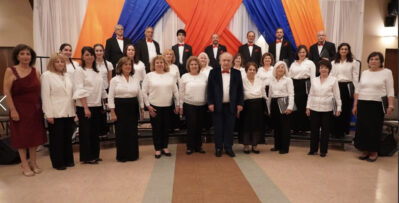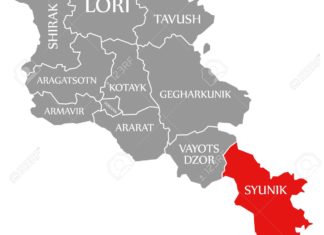Special to the Mirror-Spectator
Earlier this year in April, Angelenos witnessed an estimated160,000 marchers descend upon Wilshire Boulevard to commemorate the 100th anniversary of the Armenian Genocide. While the absolute size of these marchers is notable, it’s actually the relative size of this crowd that makes the 100th anniversary marchers that much more significant. With approximately 198,243 individuals of Armenian ancestry in Los Angeles County and 476,543 individuals nationwide, according to US census estimates, the marchers constitute nearly 80 percent of the local population, and 33 percent of the national population of Armenian-Americans. But these numbers tell us more than just how many marchers showed up — they also show an impressive degree of consensus among the marchers. Given the varied national origin, immigrant generation, occupational status, age and educational level of Armenian-Americans, it’s amazing that so many people can agree to support a single cause so vocally. However, for all the visibility the genocide and its commemoration receives, by comparison, we know precious little about how contemporary Armenian-Americans are doing. That is, aside from early sociological work on Armenian-Americans from the 1990s by scholars like Anny Bakalian or Roger Waldinger and Mehdi Bozorgmehr, we have very little demographic insight about the contemporary socio-economic conditions of Armenian-American communities. As a result, we lack representative data on how the children of contemporary Armenian-American immigrants fare when their parents settle in the US.
The US Census Bureau estimates that by the year 2050 the “non-Hispanic white” population of the US will begin transitioning into a minority for the first time in the nation’s history at which time the size of this group is projected to be at 49.7% of the population. As whites slowly become a minority in the U.S., the Hispanic population will have doubled from 56 million to 112 million, making this population the largest “minority,” and double the size of the African-American population. Similarly, the Asian population will also double between now and 2060, moving the number of this group from 15.9 million in 2012 to 34.4 million in 2060. These changes are most striking when one considers the history of legal challenges suffered by non-whites in the US. As early as 1790, Congress passed legislature that prohibited the naturalization of any immigrant who was not racially white. Astonishingly, this law remained in effect until 1952 at which time the racial prerequisites to gaining American citizenship were formally abandoned in favor of more socially inclusive criteria. The increasing acceptance of Americans’ diversity was concretized further during the 1990s when it was decided that the 2000 census would allow respondents to identify with more than one race. Given that the overall size of the foreign-born population in the US is climbing while the non-Hispanic white population is shrinking, one can’t help but wonder where Armenian-Americans fit into this shifting landscape. Are they part of the declining white population even though they are an immigrant group?
Starting this fall, the United States Census Bureau is again taking steps that can help academics, policy makers and researchers think more productively about this question. In September, the Bureau is beginning the latest version of its National Content Test, which seeks to reevaluate various social and economic indicators used in the decennial census to measure population characteristics of the United States. Among these social indicators are measures of race and ethnicity, and for the first time in the history of the US, the 2020 decennial census will measure Armenian-Americans along with several other White, Middle Eastern and North African groups as a broad racial category. The new category, “Middle Eastern or North African,” allows individual respondents to select an additional category besides just the broad racial category of White or Asian, and to specify a particular ethnicity such as Armenian. While individuals of these backgrounds have been counted before through the American Community Survey, including a new ethno-racial category in the decennial census permits a more authoritative and comprehensive measure of the nation’s population and giving understudied groups like Armenian-Americans a chance to be represented is a major step forward for the policy and advocacy community. With the addition of this new category, the census will include codes for Lebanese, Iranian, Syrian, Armenian, Assyrian, Iraqi and several other Middle Eastern and Caucasian groups which would allow respondents to claim both a white racial identity but also specify an ethnic and national origin background in the census.
With this proposed addition, scholars and community advocates alike can consult the census for accurate, robust information on the national origin of Armenians and develop a sound socioeconomic profile of the community. Without this type of detailed information policymakers are at a loss for how to best plan for and meet the needs of the Armenian-American community. So what kinds of things can we know with this information?








